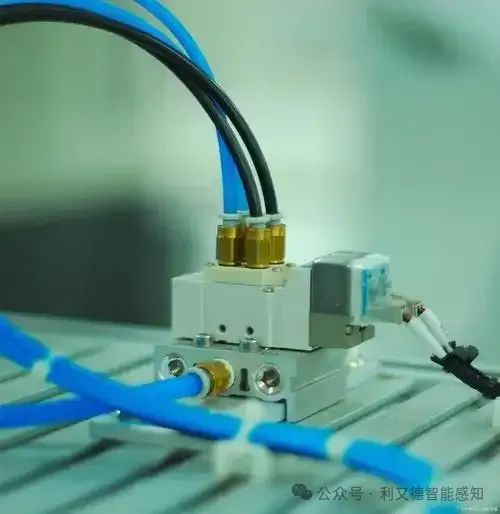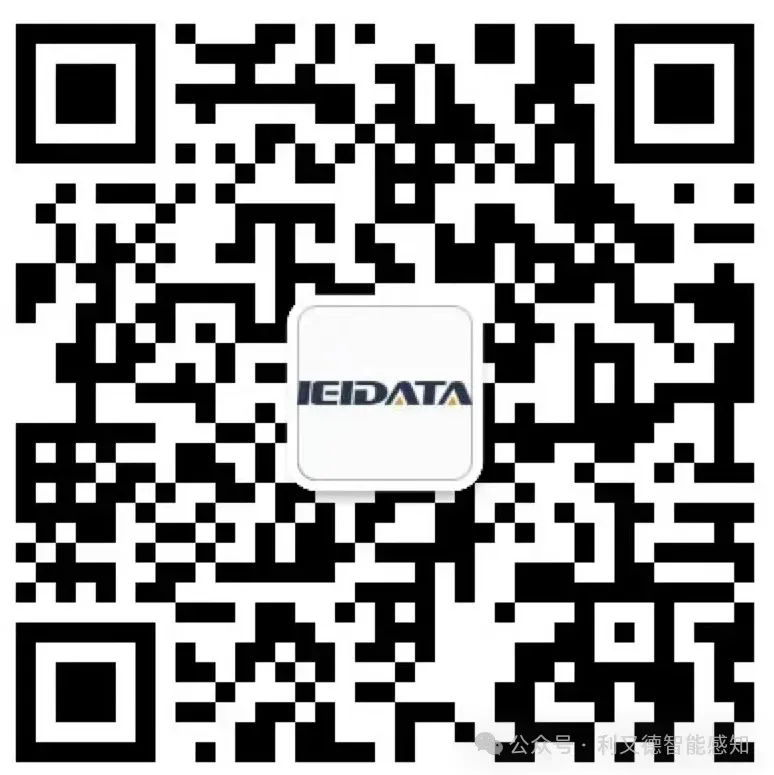A distributed sensor network (hereinafter referred to as a distributed sensor network) consists of a series of sensors connected via the Internet. These sensors can be embedded in an integrated circuit device, capable of collecting signals, processing signals, communicating with each other, and performing simple computational tasks. Sensors are arranged in different environments, and the data collected by various sensors must be integrated to obtain new information. Typically, this synthesis must be reliably completed within a certain time limit to ensure the objective authenticity of the signals. In certain specific applications, such as in automation systems, these tasks must be executed periodically to meet performance constraints.

1. Advantages and Limitations of Distributed Sensor Networks
Distributed Sensor Networks (DSNs) consist of multiple sensor nodes that can work together to perceive, collect, process, and transmit data. They have a wide range of applications in many fields, but also have some limitations. The following is a detailed analysis of their advantages and limitations:
Advantages of Distributed Sensor Networks
1. High Reliability and Fault Tolerance
-
Redundant Design: Multiple nodes can cover the same area, and even if some nodes fail, the network can still operate normally.
-
Self-Organization Capability: Nodes can dynamically adjust communication paths to adapt to changes in network topology.
2. Wide Coverage
-
Large-Scale Deployment: Through multi-node collaboration, vast areas can be covered, suitable for environmental monitoring, military reconnaissance, and other scenarios.
-
Flexible Expansion: Nodes can be added as needed to expand the monitoring range.
3. Real-Time and Efficiency
-
Distributed Processing: Data can be processed locally at the nodes, reducing transmission delays and improving response speed.
-
Parallel Collection: Multiple nodes can collect data simultaneously, increasing data acquisition efficiency.
4. Adaptability to Complex Environments
-
Multi-Parameter Monitoring: Can monitor multiple physical quantities (such as temperature, humidity, pressure, etc.) simultaneously, meeting complex application needs.
-
Adaptation to Harsh Environments: Nodes can be deployed in areas difficult for humans to reach (such as deep sea, volcanoes, battlefields).
5. Low Power Consumption and Low Cost
-
Energy Optimization: Through low-power design and energy harvesting technologies, the network’s lifespan can be extended.
-
Low-Cost Deployment: The cost of a single node is low, making it suitable for large-scale deployment.
6. Intelligence and Adaptability
-
Intelligent Algorithms: Support advanced functions such as data fusion and target recognition.
-
Dynamic Adjustment: Can automatically adjust working modes based on environmental changes.
7. Support for Various Application Scenarios
-
Environmental Monitoring: Such as meteorological monitoring, forest fire early warning.
-
Industrial Control: Such as equipment status monitoring, production line optimization.
-
Military Applications: Such as battlefield monitoring, target tracking.
-
Healthcare: Such as telemedicine, vital signs monitoring.

Limitations of Distributed Sensor Networks
1. Energy Constraints
-
Battery Life: Nodes typically rely on battery power, which is limited, and frequent battery replacements are costly.
-
Energy Harvesting Limitations: Energy harvesting methods such as solar and vibration energy are limited by environmental conditions.
2. Communication Reliability Issues
-
Signal Interference: Wireless communication is easily affected by environmental interference (such as obstacles, electromagnetic interference).
-
Transmission Distance Limitations: The communication range of a single node is limited, and multi-hop transmission may increase delays and energy consumption.
3. Data Processing and Storage Challenges
-
Large Data Volume: The data generated by large-scale networks is enormous, requiring high storage and processing capabilities.
-
Data Redundancy: Multiple nodes may collect similar data, leading to redundancy.
4. Network Management and Maintenance Difficulties
-
Node Failures: Nodes may fail due to energy depletion or environmental factors, affecting network performance.
-
Dynamic Topology: Node movement or environmental changes may lead to frequent changes in network topology, increasing management difficulty.
5. Security and Privacy Issues
-
Data Security: Wireless communication is vulnerable to attacks, and data may be stolen or tampered with.
-
Privacy Leakage: In fields such as healthcare and military, data privacy protection is crucial.
6. Cost and Deployment Complexity
-
Initial Deployment Costs: Large-scale deployment requires many nodes, leading to high initial costs.
-
Maintenance Costs: Nodes are widely distributed, leading to high maintenance and replacement costs.
7. Standardization and Compatibility Issues
-
Protocol Incompatibility: Devices and protocols from different manufacturers may not be compatible, affecting network expansion and integration.
-
Lack of Standards: There is a lack of unified standards in data formats, communication protocols, etc.
Summary
Advantages: Distributed sensor networks have high reliability, wide coverage, strong real-time performance, adaptability to complex environments, low power consumption, and intelligence, widely applied in environmental monitoring, industrial control, military, healthcare, and other fields.
Limitations: Energy constraints, communication reliability, data processing and storage, network management, security issues, costs, and standardization are the main challenges they face.
Future Development Directions
-
Energy Optimization: Develop low-power technologies and efficient energy harvesting methods.
-
Intelligent Algorithms: Utilize artificial intelligence to optimize data collection and processing.
-
Security Enhancement: Strengthen data encryption and privacy protection.
-
Standardization: Promote the standardization of protocols and interfaces to improve compatibility.
Through continuous technological innovation and optimization, the advantages of distributed sensor networks will be further enhanced, while their limitations will gradually be overcome, providing efficient and reliable solutions for more fields.
Overall Technological Trends Affecting the Development of Distributed Sensor Networks
The development of Distributed Sensor Networks (DSNs) is driven by various technological trends, which not only enhance the performance of the networks but also expand their application scope. The following are the main technological trends affecting the development of distributed sensor networks:
1. Popularization of Internet of Things (IoT) Technology
-
Device Interconnection: IoT technology enables sensor nodes to seamlessly connect with other devices and systems, achieving data sharing and collaborative work.
-
Standardized Protocols: The application of protocols such as MQTT and CoAP improves network compatibility and scalability.
2. Edge Computing and Distributed Processing
-
Local Data Processing: Edge computing technology allows data to be processed close to the sensor nodes, reducing transmission delays and bandwidth requirements.
-
Real-Time Response: Distributed processing enhances the real-time performance and response speed of the network, suitable for applications requiring quick decision-making.
3. Low Power Wide Area Network (LPWAN) Technology
-
Long-Distance Communication: Technologies such as LoRa and NB-IoT support long-distance, low-power communication, suitable for wide-area monitoring.
-
Energy Efficiency: Low-power designs extend the lifespan of nodes and reduce maintenance costs.
4. Artificial Intelligence and Machine Learning
-
Intelligent Data Analysis: AI and machine learning algorithms are used for data fusion, anomaly detection, and target recognition, improving the intelligence level of the network.
-
Adaptive Optimization: Through machine learning, the network can adapt to environmental changes, optimizing resource allocation and working modes.
5. 5G and Next-Generation Communication Technologies
-
High Bandwidth and Low Latency: 5G technology provides high bandwidth and low latency communication capabilities, supporting large-scale data transmission and real-time applications.
-
Network Slicing: 5G’s network slicing technology can provide customized network services for different application scenarios.
6. Energy Harvesting and Self-Powered Technologies
-
Environmental Energy Harvesting: Energy harvesting technologies such as solar, vibration, and thermal energy allow nodes to be self-powered, reducing dependence on batteries.
-
Energy Management: Efficient energy management algorithms optimize energy usage, extending the network’s lifespan.
7. Miniaturization and Integration
-
MEMS Technology: Micro-Electro-Mechanical Systems (MEMS) technology makes sensor nodes more miniaturized, suitable for deployment in complex and confined spaces.
-
Multi-Functional Integration: Integrating multiple sensors and communication modules into one node enhances the flexibility and functionality of the network.
8. Network Security and Privacy Protection
-
Data Encryption: Advanced encryption technologies protect the security of data transmission and storage, preventing data leakage and tampering.
-
Privacy Protection: Techniques such as differential privacy protect user data privacy, applicable in sensitive fields like healthcare and military.
9. Blockchain Technology
-
Data Integrity: Blockchain technology ensures the immutability and traceability of data, enhancing data credibility.
-
Decentralized Management: Blockchain supports decentralized network management, enhancing network reliability and security.
10. Multi-Sensor Fusion Technology
-
Data Fusion: By fusing data from multiple sensors, monitoring accuracy and reliability are improved.
-
Collaborative Work: Multi-sensor collaboration enables more complex monitoring tasks.
11. Cloud Computing and Big Data Technologies
-
Data Storage and Analysis: Cloud computing provides powerful data storage and processing capabilities, supporting large-scale data analysis.
-
Intelligent Decision-Making: Big data technologies are used to mine potential value from data, supporting intelligent decision-making and forecasting.
12. Adaptive and Self-Organizing Networks
-
Dynamic Adjustment: The network can dynamically adjust its topology and working modes based on environmental changes and node status.
-
Self-Organizing Capability: Nodes can automatically form networks and repair themselves, enhancing the robustness and reliability of the network.
13. Green and Sustainable Development
-
Environmentally Friendly Materials: Using environmentally friendly materials to manufacture sensor nodes reduces environmental impact.
-
Energy-Saving Design: Optimizing network design to reduce energy consumption supports sustainable development.
Summary: The development of distributed sensor networks is driven by multiple technological trends such as IoT, edge computing, low-power communication, artificial intelligence, 5G, energy harvesting, miniaturization, network security, blockchain, multi-sensor fusion, cloud computing, self-organizing networks, and green technologies. These trends not only enhance the performance of the networks but also expand their application scope, making distributed sensor networks increasingly important in fields such as environmental monitoring, industrial control, healthcare, and intelligent transportation. In the future, with continuous technological advancements, distributed sensor networks will become more intelligent, efficient, and reliable.
Classification of Distributed Sensor Network Architectures The architecture of Distributed Sensor Networks (DSNs) can be classified according to different criteria. Here are several common classification methods and their detailed descriptions:1. Classification by Node Function(1) Homogeneous Networks
- Characteristics: All nodes have the same hardware and software configuration, with consistent functions.
- Advantages: Easy to design, deploy, and manage.
- Disadvantages: Lower flexibility, difficult to adapt to complex tasks.
- Application Scenarios: Small-scale, single-task monitoring networks.
(2) Heterogeneous Networks
- Characteristics: Nodes have different hardware and software configurations, with varied functions.
- Advantages: Adaptable to complex tasks, high resource utilization.
- Disadvantages: Complex design and management.
- Application Scenarios: Large-scale, multi-task collaborative networks.
2. Classification by Network Topology(1) Flat Structure
- Characteristics: All nodes are equal in status and communicate directly with the aggregation node.
- Advantages: Simple structure, easy to deploy.
- Disadvantages: Heavy burden on the aggregation node, prone to performance bottlenecks.
- Application Scenarios: Small-scale networks.
(2) Hierarchical Structure
- Characteristics: Nodes are organized hierarchically, with higher-level nodes responsible for data aggregation and transmission.
- Advantages: Good scalability, suitable for large-scale networks.
- Disadvantages: Failure of higher-level nodes can affect the entire network.
- Application Scenarios: Large-scale monitoring networks.
(3) Mesh Structure
- Characteristics: Nodes can communicate directly with each other, forming a multi-hop network.
- Advantages: High reliability, strong fault tolerance.
- Disadvantages: Complex routing, higher energy consumption.
- Application Scenarios: Dynamic environments or scenarios requiring high reliability.
3. Classification by Data Processing Method(1) Centralized Processing
- Characteristics: All data is sent to a central node for processing.
- Advantages: Centralized data processing, easy to manage.
- Disadvantages: Heavy burden on the central node, high communication overhead.
- Application Scenarios: Small-scale networks or scenarios with low data processing volume.
(2) Distributed Processing
- Characteristics: Data is processed locally at the nodes, with partial results transmitted to the aggregation node.
- Advantages: Reduces communication overhead, improves real-time performance.
- Disadvantages: Limited computational capacity of nodes, difficult to handle complex tasks.
- Application Scenarios: Large-scale networks or scenarios requiring real-time responses.
(3) Edge Computing
- Characteristics: Data is processed at the network edge (close to sensor nodes).
- Advantages: Reduces latency, decreases bandwidth requirements.
- Disadvantages: Limited computational capacity of edge devices.
- Application Scenarios: Scenarios requiring low latency and high real-time performance.
4. Classification by Communication Method(1) Wired Networks
- Characteristics: Nodes are connected via cables or optical fibers.
- Advantages: Stable communication, strong anti-interference capability.
- Disadvantages: Complex deployment, low flexibility.
- Application Scenarios: Fixed deployment scenarios, such as industrial monitoring.
(2) Wireless Networks
- Characteristics: Nodes communicate via wireless signals (such as Wi-Fi, Bluetooth, ZigBee).
- Advantages: Flexible deployment, adaptable to dynamic environments.
- Disadvantages: Prone to interference, limited communication distance.
- Application Scenarios: Mobile or hard-to-wire scenarios.
(3) Hybrid Networks
- Characteristics: Combines wired and wireless communication methods.
- Advantages: Balances stability and flexibility.
- Disadvantages: Complex design and management.
- Application Scenarios: Complex environments or large-scale networks.
5. Classification by Energy Supply Method(1) Battery-Powered
- Characteristics: Nodes rely on battery power.
- Advantages: Simple deployment.
- Disadvantages: Limited energy, requires regular battery replacement.
- Application Scenarios: Short-term or small-scale deployments.
(2) Energy Harvesting
- Characteristics: Nodes harvest energy through solar, vibration, etc.
- Advantages: Extends network lifespan, suitable for long-term operation.
- Disadvantages: Limited by environmental conditions.
- Application Scenarios: Long-term monitoring tasks.
(3) Wired Power Supply
- Characteristics: Nodes are powered by an external power source.
- Advantages: Stable energy supply.
- Disadvantages: Complex deployment, low flexibility.
- Application Scenarios: Fixed deployment scenarios.
6. Classification by Dynamics(1) Static Networks
- Characteristics: Node positions are fixed.
- Advantages: Easy to manage and maintain.
- Disadvantages: Poor adaptability.
- Application Scenarios: Long-term monitoring tasks.
(2) Dynamic Networks
- Characteristics: Node positions can move.
- Advantages: Adaptable to dynamic environments.
- Disadvantages: Complex management.
- Application Scenarios: Target tracking, mobile monitoring.
7. Classification by Network Scale(1) Small Networks
- Characteristics: Fewer nodes.
- Advantages: Easy to deploy and manage.
- Disadvantages: Limited coverage.
- Application Scenarios: Local area monitoring.
(2) Medium Networks
- Characteristics: Moderate number of nodes.
- Advantages: Broader coverage.
- Disadvantages: Increased management complexity.
- Application Scenarios: City or factory-level monitoring.
(3) Large Networks
- Characteristics: A vast number of nodes.
- Advantages: Wide coverage.
- Disadvantages: Complex design and management.
- Application Scenarios: Wide-area monitoring (such as national meteorological monitoring).
Summary: The architecture of distributed sensor networks can be classified according to various standards such as node function, topology, data processing method, communication method, energy supply method, dynamics, and network scale. Different classification methods are suitable for different application scenarios and needs. With technological advancements, the architecture of distributed sensor networks will become more flexible, intelligent, and efficient, better meeting complex and changing application requirements.
Wuhan Li You De Technology Co., Ltd.
TEL:027-83621617
CAL:13296589910